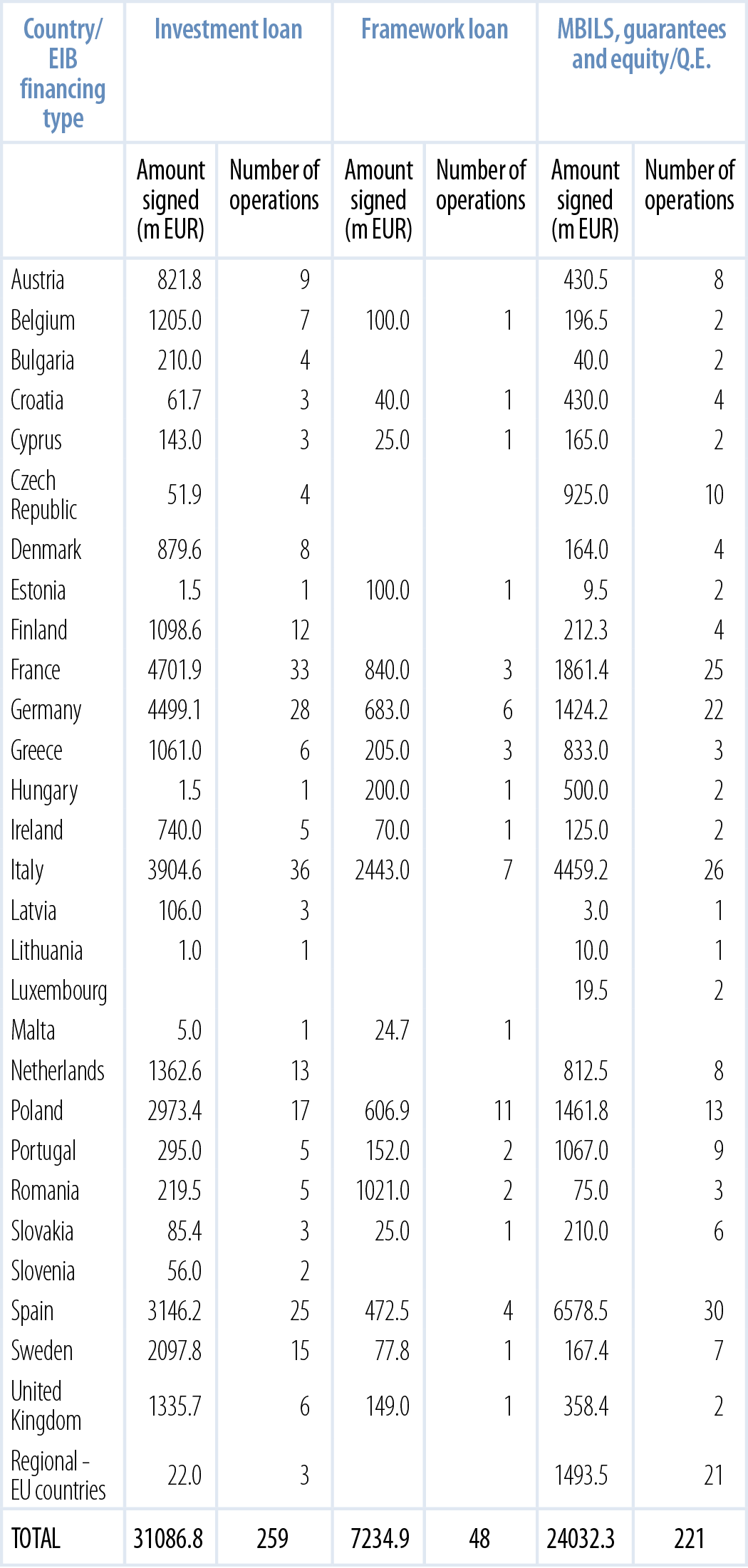Annexes

Value Added
The Bank measures its success in terms of its contribution to EU policy, the quality and soundness of the projects it finances, and the technical and financial contribution it makes to each project using its Three-Pillar Assessment (3PA).
Contribution to EU Policy
Before accepting a project proposal for possible finance, the Bank first checks that it meets at least one of the Bank’s policy objectives, as outlined in Section 1.1.2. In practice, most projects financed by the Bank meet multiple objectives. An innovation project may be located in a priority region and may be an SME: all EIB policy objectives. The Bank has a structured methodology for identifying and measuring the potential policy impacts of all of the projects it funds, and tracks these through the projects’ implementation, completion and operational phases.
Quality and soundness of the Project
Projects can only achieve their policy objectives if they are effective, efficient and sustainable. All projects are therefore the object of a due diligence process which thoroughly analyses both the project itself, and the promoter of the project, who is usually the Bank’s borrower. This due diligence process is almost exclusively carried out in-house. All projects are rated for soundness and quality. These measures form the basis of the Bank’s monitoring of the project at different stages in the project’s life ensuring that the project is achieving its original policy objectives, and providing a comparison with the impacts being achieved by other, similar projects.
EIB’s technical and financial contribution to the project
The Bank’s financial contribution typically takes one or more of the following forms:
- Loan term – The EIB is a long-term lender, offering maturities which are typically much longer than a commercial bank would be prepared to provide to the same borrower. This not only provides a better match to the life of the asset being financed, but it means that capital repayments can be more manageable. The Bank’s technical expertise in its Projects Directorate is used to assess the effective life of the assets, and hence the maximum term of a loan.
- First mover – The Bank, due to its in-house expertise and financial strength, will often be the first to commit to the financing of a project, after which commercial banks may also provide support. The longer-term loans offered by the EIB, mean that there is more cash flow available to satisfy the lending criteria of other financial sector actors.
- Halo or catalytic effect – The implementation and quality of the Bank’s due diligence process, and the knowledge that the EIB only finances economically viable and financially sustainable projects, increases the likelihood that other banks and investors will involve themselves in the project.
The technical contribution of the Bank can be classified as being either formal or informal. The formal role is primarily the responsibility of the Bank’s Advisory Services Department. This provides structured technical and financial advisory services to internal and external clients. External services build on the Bank’s historic strength in project development and risk assessment, to support a wide range of mainly public sector projects. Informal services are provided during the pre-appraisal and appraisal stages of the EIB-client relationship. The breadth and depth of the experience which the Bank’s engineers and economists can offer often helps guide project promoters to better, more cost effective, and more appropriate capital expenditure. See the section on the Bank’s advisory role for more information.
Overview of operations signed by EIB in 2017 inside the EU by country and type of financial instrument[1]

[1] Given the cross-border and multi-instrument nature of some operations, the total number of operations presented in the table exceeds the nominal 445 operations signed in 2017.